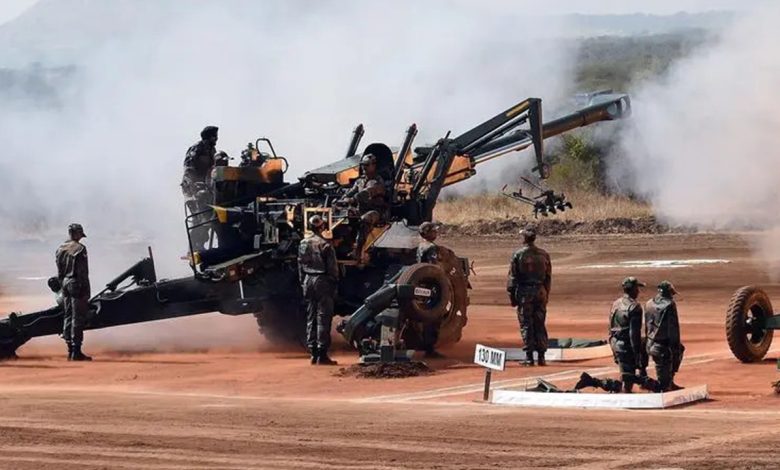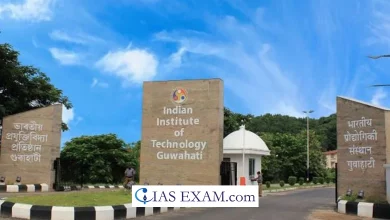Daily Current Affairs for UPSC
SIPRI Report on Global Arms Import
Syllabus- Internal Security [GS Paper-3]

Context- Despite a decrease in overall imports, India will continue to be the largest importer of arms from 2018 to 22.
Key Highlights
- According to the Stockholm International Peace Research Institute (SIPRI), India is the world’s largest arms importer from 2018 to 22.
- The leading international institute on conflict, peace, and arms control is SIPRI.
- India’s arms imports decreased by 11% between 2013–17 and 2018–22, but it continues to be the world’s largest importer of major arms since 1993, according to the findings.
- Between 2018 and 22, France emerged as India’s second-largest arms supplier, despite Russia’s share of India’s total arms imports dropping from 64% to 45%.
India’s Arms Imports and Products
- India is the largest market for arms exports to Russia, France, and Israel
- It is the second largest market for arms exports to South Korea.
- India was also the third largest market for arms exports to South Africa, which ranked 21 on the list of arms exporters.
- During the same time, India remained the largest importer of arms, followed by Saudi Arabia. Russia was responsible for 45% of India’s imports, followed by France (29%) and the United States (11%) India was the third largest arms supplier
Reasons for India’s Drop in Arms Imports:
- India’s cumbersome and slow arms procurement process
- Its efforts to diversify its arms suppliers,
- Its efforts to replace imports with major domestically designed and manufactured arms
Russian arms exports
- India (31%), China (23%), and Egypt (9.3%) accounted for just under two thirds of Russian arms exports from 2018 to 22.
- Russia’s position as India’s primary arms supplier is under pressure from strong competition from other supplier states, increased Indian arms production, and restrictions on Russia’s arms exports since 2022 related to its invasion of Ukraine.
Imports of Arms by Pakistan:
- Between 2013–17 and 2018–22, Pakistan increased its imports of arms by 14 percent.
- It was 3.7% of the global total, and China supplied 77% of Pakistan’s imports of arms from 2018 to 22.
Worldwide Arms Moves:
- Between 2013–17 and 2018–22, in the midst of the war in Ukraine, major arms imports by European states increased by 47%, while the global level of international arms transfers decreased by 5.1%.
- The U.S. portion of worldwide arms trades expanded from 33% to 40% while Russia’s tumbled from 22% to 16%.
Challenges of arms imports
- Complex and slow procurement procedure: The lengthy and complicated arms procurement process in India can cause delays in the purchase of essential weapons and equipment.
- Utilization of foreign suppliers: India’s imports of arms continue to be heavily reliant on foreign suppliers, making it susceptible to supply disruptions, geopolitical tensions, and shifting global dynamics.
- The variety of suppliers: India is putting forth attempts to enhance its arms providers to decrease its reliance on any one nation, however this interaction can be troublesome and tedious.
- Production of arms at home: India also tries to make more of its own weapons at home, but this will take a lot of money in infrastructure, technology, and skilled labor.
- Import substitution: India wants to replace some of its imported arms with arms designed and manufactured in the country, but the process can be slow and difficult.
Actions taken by the government
- The Indian government has taken a number of actions to boost domestic arms production and lessen its reliance on arms imports. Among these measures are:
- Policy for Defense Manufacturing: The Defense Manufacturing Policy that the government has come up with aims to increase domestic defense manufacturing self-sufficiency and reduce import dependence.
- Produce in India: By providing incentives for private sector investment in the defense industry, the Make in India initiative encourages domestic production of defense equipment, including fighter jets, submarines, and helicopters.
- Model of Strategic Partnership: Policy framework known as the Strategic Partnership (SP) Model makes it possible for private firms to collaborate with foreign Original Equipment Manufacturers (OEMs) to produce defense equipment in India.
- Transfer of Technology: Indian companies can now manufacture and maintain sophisticated defense equipment domestically thanks to the government’s encouragement of technology transfer from foreign OEMs.
- Exports of Defense: The government is encouraging the export of defense equipment to other nations, which not only aids the expansion of Indian defense manufacturers but also strengthens India’s standing as a global supplier of defense equipment.
- Fund for Defense Innovation: The purpose of the Defence Innovation Fund (DIF) is to provide start-ups and MSMEs working on innovative defense technologies with financial assistance.
- Corridors for defense: To encourage defense manufacturing in these areas, the government has announced the establishment of two defense corridors, one in Uttar Pradesh and one in Tamil Nadu.
About SIPRI
|





.png)



